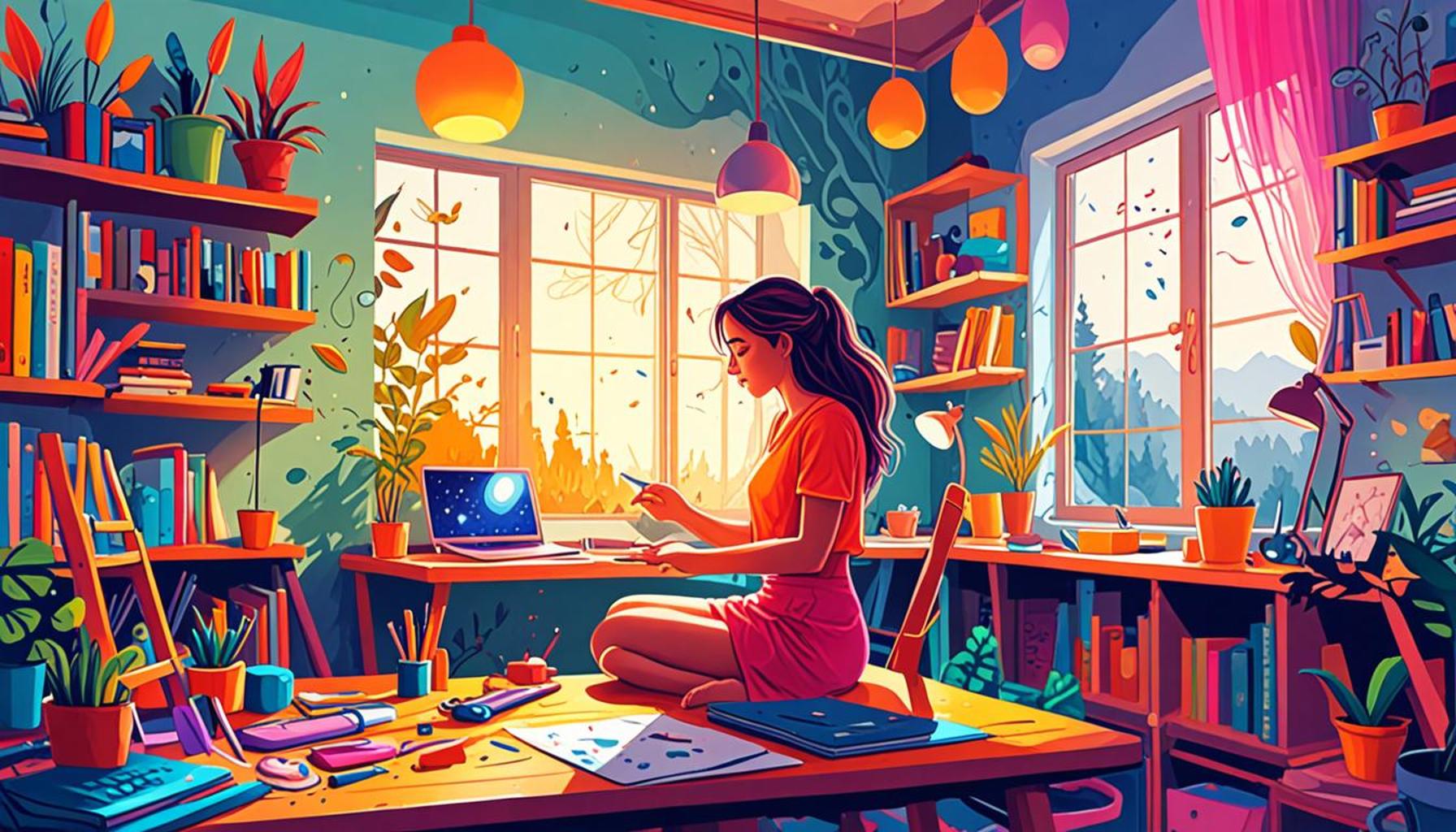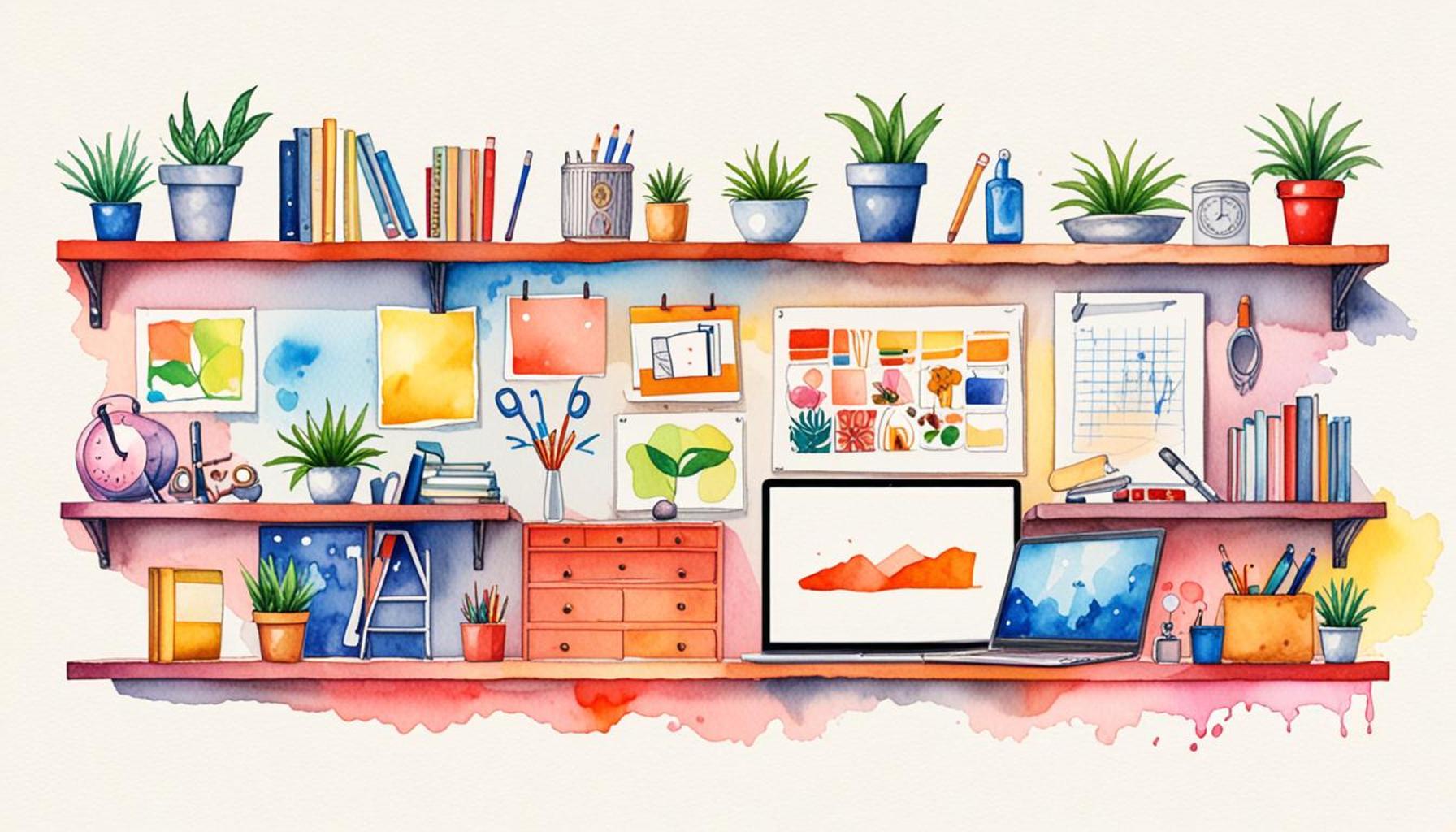The Aesthetics of Intentional Design: How Visual Simplicity Can Transform Your Life

The Essence of Intentional Design
In a world overflowing with distractions, the notion of intentional design emerges as a beacon of clarity. It promises a lifestyle steeped in simplicity, where each visual element serves a purpose. But how does this aesthetic transcend mere decor and influence our daily existence? The answer lies in understanding the underlying principles and their application across various settings.
Clarity of Purpose
Every design choice communicates intent. For instance, when redesigning a website, simplicity in navigation not only enhances user experience but also allows visitors to find what they are looking for without frustration. Large, clear fonts and easily distinguishable buttons help users feel comfortable as they interact with the site. In a physical context, consider how Apple utilizes intentional design in its product displays. Their minimalist approach showcases each product beautifully, focusing attention on the items rather than extraneous details.
Emotional Connection
A minimalist aesthetic fosters calm and focus, influencing how we feel in a space. Studies have shown that cleaner environments can lead to improved mental health. For example, Japanese Zen gardens, with their carefully arranged stones and raked sand, evoke a sense of peace and contemplation. On a more practical level, creating a serene bedroom using a monochromatic color palette, natural materials, and minimal decor can help individuals relax and unwind, ultimately contributing to better sleep quality.
Functional Beauty
Form meets function, enhancing user experience. Think about Scandinavian design, famous for its clean lines and multifunctional furniture. A simple coffee table that doubles as storage not only looks good but also addresses space constraints, particularly in urban dwellings. In workplaces, ergonomic chairs that provide comfort without sacrificing style can lead to increased productivity by reducing physical strain during long hours.
The Impact of Intentional Design
Visual simplicity can significantly impact various facets of life, from home environments to workplace efficiency. A clutter-free workspace can lead to heightened productivity, allowing individuals to focus better on their tasks. Conversely, a serene living space, characterized by intentional design principles, promotes relaxation and supports mental well-being. The transformation from chaos to order, achieved through thoughtful design choices, improves not only our surroundings but also our cognitive processes.

As we delve deeper into the aesthetics of intentional design, you will uncover how small, mindful changes can lead to profound shifts in your mindset and lifestyle. The journey awaits, inviting you to explore the intersection of beauty and utility in the world around you. Take those initial steps towards simplicity—be it through decluttering a room, selecting multipurpose furniture, or just appreciating the calmness that comes from less. Each decision echoes the essence of intentional design, illustrating how a truly thoughtful approach enhances our everyday experiences.
DISCOVER MORE: Click here to find out how design impacts your furniture choices
Transformative Power of Visual Simplicity
The transformative power of visual simplicity lies in its ability to streamline our experiences and enhance our overall well-being. By focusing on intentional design, we can cultivate environments that not only please the eye but also support our daily lives. This shift towards simplicity is becoming increasingly relevant in urban settings, where the fast pace and overwhelming stimuli can easily lead to mental fatigue. As we examine various scenarios where visual simplicity reigns supreme, it becomes clear how impactful intentional design can be.
Streamlining Daily Activities
From the moment we wake up to the time we sleep, our lives are a series of decisions influenced by our environments. Intentional design based on simplicity can streamline these daily activities, allowing us to navigate life with greater ease. Think about the following examples:
- Kitchen layouts: An organized kitchen with decent storage solutions and clear labeling encourages efficient meal preparation and promotes healthier eating habits.
- Decluttered entryways: A focused approach, where coats and shoes have designated spots, eliminates the stress of rummaging through clutter and promotes a peaceful start to the day.
- Minimalist planners: Using simple, uncluttered planners can make goal-setting and time management feel more approachable, leading to productive habits.
These small yet significant changes can create a ripple effect that touches every aspect of our lives, reinforcing the idea that less truly can be more.
Reducing Cognitive Load
Cognitive load refers to the amount of mental effort being used in the working memory. A cluttered or overly complex environment can exacerbate this load, leading to feelings of overwhelm. The principles of intentional design emphasize creating environments that facilitate mental clarity. For example, research demonstrates that individuals working in office spaces adorned with excessive decorations can struggle to concentrate, while those in simplified, organized settings experience improved focus and creativity.
By adopting a minimalist approach, we reduce distractions and foster an atmosphere conducive to concentration. It is essential to integrate elements that are not only beautiful but also functional, leading to greater productivity and satisfaction.
Intentional Spaces for Reflection
Spaces designed with visual simplicity can serve as retreats for reflection and mindfulness. Consider a meditation corner in a home, equipped with a comfortable mat, soft lighting, and minimal decor that invites tranquility. The design choices made in this space can significantly impact a person’s ability to relax and decompress amidst life’s chaos. Research suggests that such dedicated areas can support emotional resilience and mental clarity.
As we delve deeper into the aesthetics of intentional design, the relationship between visual simplicity and personal well-being will become increasingly clear. Embracing these principles lays the groundwork for a lifestyle that champions calmness, focus, and functionality, ultimately enhancing the quality of our daily experiences.
| Key Aspects | Impact on Life |
|---|---|
| Clarity | Enhances decision-making and reduces mental clutter. |
| Functionality | Streamlines everyday tasks, promoting productivity and efficiency. |
| Simplicity | Minimizes distractions, fostering a more focused and gratifying lifestyle. |
| Aesthetic Appeal | Inspires creativity and enhances one’s emotional well-being. |
In the realm of intentional design, the integration of clarity, simplicity, and functionality plays a pivotal role in shaping interactions with our environments. The focus on visual simplicity does not merely create an aesthetically pleasing atmosphere but also profoundly enhances our daily experiences and decision-making processes. When we declutter both our physical and mental landscapes, we foster an environment that encourages clear thought and innovative ideas. Additionally, simplicity enables us to streamline our tasks, often marred by chaos and overwhelming choices. This streamlined approach brings forth a sense of achievement and efficiency, allowing individuals to focus on what truly matters. With such a profound impact on quality of life, embracing the aesthetics of intentional design becomes not just a choice but a necessary step towards a more satisfying existence, inspiring the pursuit of greater creativity and fulfillment in a hectic world.
DISCOVER MORE: Click here to learn how design can enhance your sustainable journey
The Role of Color and Texture in Intentional Design
The interplay of color and texture within the framework of intentional design significantly contributes to achieving visual simplicity, enhancing both aesthetic appeal and emotional resonance. Colors evoke emotions and can influence our mood throughout the day. For instance, studies indicate that hues like blue and green can induce feelings of calm and tranquility, while brighter colors such as yellow are associated with optimism and energy. By intentionally selecting a color palette that aligns with the intended atmosphere of a space, one can create a more harmonious and balanced environment.
Texture, too, plays a pivotal role in creating a sensory experience that complements visual simplicity. Smooth, soft textures can promote comfort and relaxation, while more textured surfaces can add depth without overwhelming the senses. Pairing these elements thoughtfully can elicit a response that invites reflection and serenity, aligning perfectly with the objectives of intentional design.
The Impact of Nature on Visual Simplicity
Integrating natural elements into our living spaces has emerged as a vital aspect of intentional design. Known as biophilic design, this trend embraces the connection between humans and nature, highlighting the restorative benefits of natural environments. Research has shown that exposure to nature—whether through the use of houseplants, natural light, or the incorporation of outdoor views—can enhance emotional well-being and reduce stress levels.
Simple design choices, like placing a few strategically chosen plants throughout a home or office, can bring vitality and freshness to the space. An addition as uncomplicated as a succulent can provide mental clarity, making the environment both aesthetically pleasing and psychologically beneficial. Furthermore, the organic forms often found in nature can foster a sense of peace, harmonizing beautifully with the principles of visual simplicity.
Technology and Visual Simplicity
As our world becomes increasingly tech-driven, the concept of visual simplicity also extends into the realm of technology. Modern digital interfaces have adopted minimalist principles to enhance user experience—think of successful platforms like Apple and Google, which prioritize streamlined layouts and clean designs. The philosophy behind these choices is simple: fewer distractions lead to more focused interaction.
Moreover, employing responsive design when creating both physical and digital spaces ensures adaptability, catering to varying user needs without sacrificing simplicity. This principle mirrors the idea that effective design transcends the visual realm and must also accommodate functionality. By integrating technology that emphasizes usability and declutters visual stimulus, users can enjoy a more seamless experience.
Creating Community Through Shared Spaces
Intentional design’s influence extends beyond our personal environments, fostering a sense of community through thoughtfully designed shared spaces. Public parks, community gardens, and open-air markets that adopt principles of visual simplicity encourage interaction and social cohesion. For example, well-designed public seating areas adorned with greenery and streamlined furnishings invite passersby to pause and engage with one another, enhancing community bonds.
Such designs promote inclusivity and accessibility while emphasizing the beauty of simplicity, making shared spaces more inviting. In turn, this approach encourages a culture where individuals feel comfortable sharing ideas and experiences, enriching their lives and promoting overall well-being.
DISCOVER MORE: Click here to dive deeper
Conclusion: Embracing Visual Simplicity for a Transformed Life
In navigating the complexities of modern life, the aesthetics of intentional design emerge as a vital ally, offering a pathway to clarity and tranquility. By embracing visual simplicity, individuals can create environments that resonate with their emotional and psychological needs, promoting well-being and enhancing everyday experiences. The deliberate integration of color, texture, and natural elements not only cultivates an inviting atmosphere but also fosters a sense of peace and harmony that is increasingly hard to find in our fast-paced world.
The influence of technology on design is equally transformative, as minimalist interfaces streamline our digital interactions, making them more intuitive and less overwhelming. By adopting these principles, we can diminish distractions and refocus our attention on what truly matters, be it in personal or communal spaces. When thoughtfully designed, shared environments can cultivate community connections, encouraging social engagement and inspiration through simplicity.
Ultimately, the journey toward intentional design and visual simplicity is both personal and communal. It’s a call to seek out beauty without clutter, to find solace in balance, and to create spaces that reflect our values and aspirations. As we move forward, let us champion the notion that embracing simplicity is not just an aesthetic choice but a powerful strategy for a more meaningful and fulfilling life. The transformative potential of intentional design awaits; will you answer its call?


